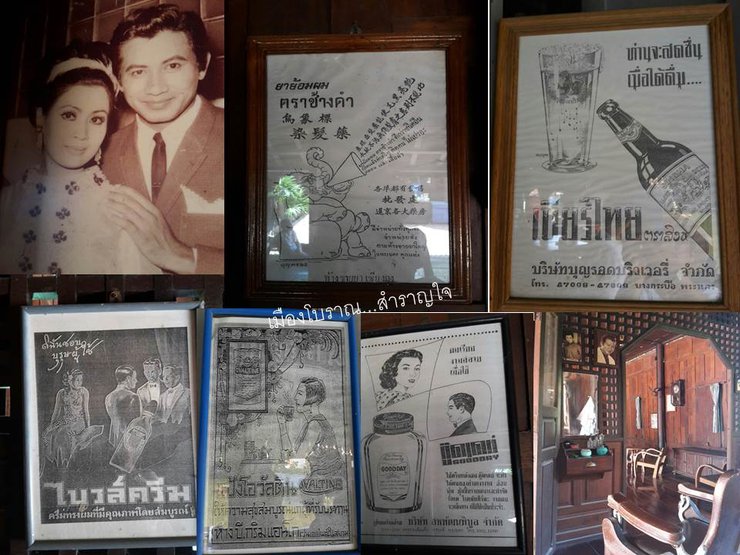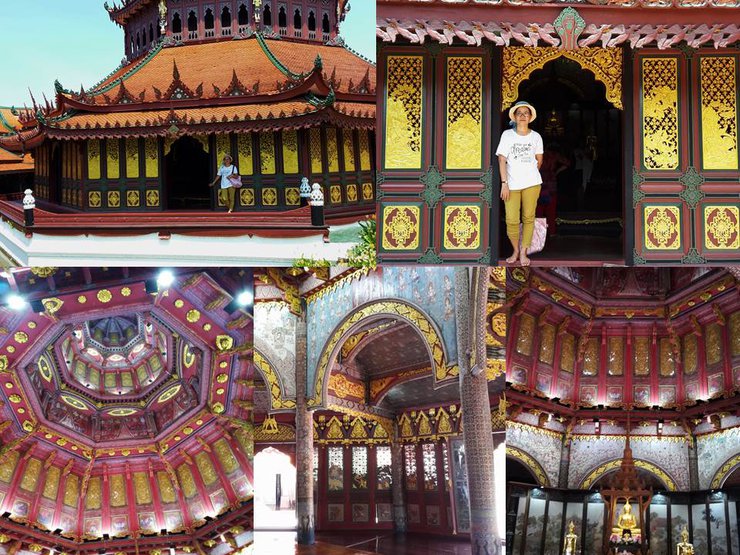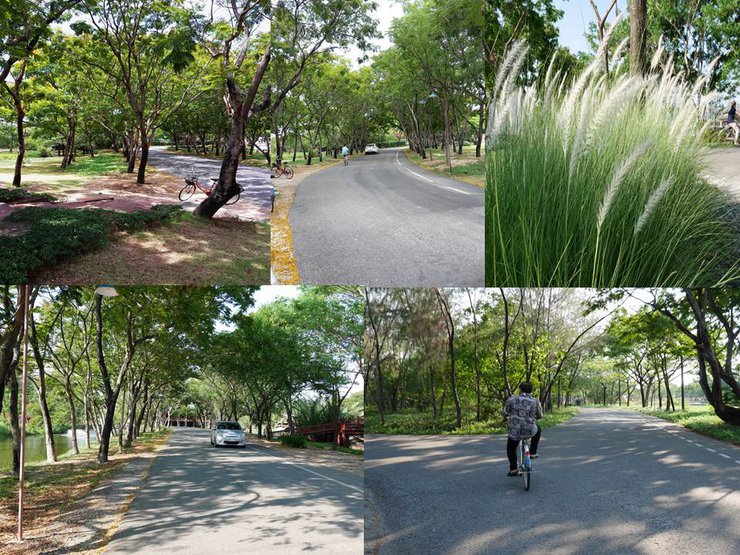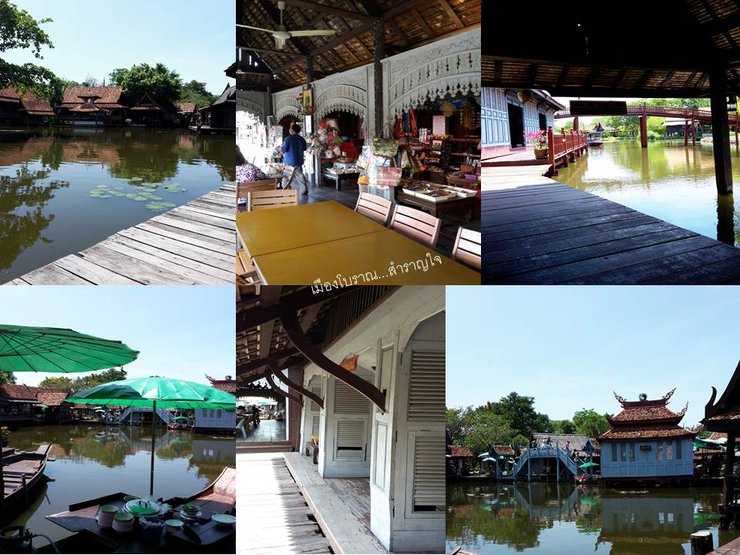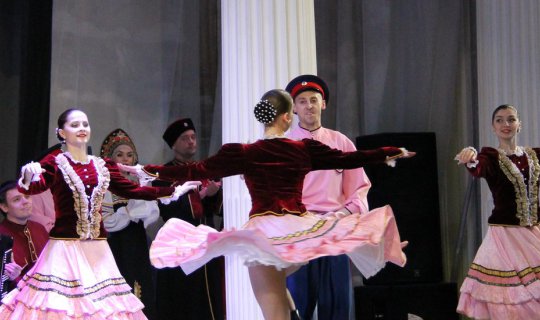Hello, this blog is a new venture into the world of travel reviews. While the presentation may not be as polished as others, I hope to share my experiences and insights from my travels for the benefit of the general public and those interested in exploring new places. Through storytelling and captivating images, I aim to add a touch of flavor and information to each trip, making every adventure meaningful and enjoyable for the reader.
This first entry chronicles a short journey to a place often referred to as "a paradise for Bangkokians." During the long Songkran festival weekend, when most people are traveling to their hometowns, Bangkok becomes a haven of peace and quiet, offering a unique opportunity for city dwellers to explore their own backyard with ease and efficiency. So, without further ado, let's embark on a journey to "Ancient City."
From Ramkhamhaeng Road area (private car), take the Kanchanaphisek Expressway (Eastern Ring Road) through Thap Chang Toll Plaza and Burapha Withi Toll Plaza. Near Mega Bangna shopping mall, when you see the Erawan Elephant Museum, exit the expressway. Continue driving straight on Samut Prakan-Samrong Road until you reach Samut Prakan Intersection. Turn right onto Sukhumvit Road (Old Road) for about 33 kilometers. You will see a large replica of the kilometer marker.

The front area serves as a parking lot and ticket booth. Ticket prices for Thai citizens are as follows: adults 250 baht, children 125 baht, and senior citizens aged 60 and over receive a 50% discount, bringing the price down to 125 baht. Residents of Samut Prakan also receive a 50% discount (must show ID card). For foreign visitors, tickets cost 400 baht for adults and 200 baht for children. During our visit, there was a special promotion for Thai citizens, who only had to pay 100 baht per person (lucky us!).
There are several ways to explore the park, including a tram service, golf carts of various sizes (seating 2, 4, 8, or 10 people), self-driving options, and chauffeured services. Prices vary depending on the chosen option. Visitors can also bring their own vehicles for a fee of 400 baht per car. For those who prefer a more leisurely pace or enjoy the outdoors, bicycles are available free of charge. Walking is also permitted.
For this trip, we opted for a leisurely bike ride. Follow along as we explore the park's attractions...
Illustrations


The lush green trees lining the path provided shade and a pleasant atmosphere for cycling, making the journey enjoyable and cool. Many fellow cyclists shared the path, creating a sense of camaraderie. Our first stop was a traditional wooden building, where exhibits showcased the history, biography, and vision of the founder and creator of this ancient city, offering visitors and enthusiasts an opportunity to learn and explore.



The next station that is creating a buzz and inviting visitors to stop by is the "Ancient Market," located in the Free Zone (as per the map). This vibrant retro-themed area features traditional-style buildings housing a diverse range of shops selling nostalgic items such as vintage toys, dolls, and sweets. Visitors can immerse themselves in the atmosphere and capture memories of a bygone era.

The provided text is an empty paragraph containing only a line break and a closing paragraph tag. There is no content to translate.
We wandered through the exhibits, our eyes catching a sign that listed the attractions within. We ventured inside and were not disappointed. On one side was an open-air traditional Thai wooden house. Inside, it was decorated like an old-fashioned home, with framed pictures hanging on the walls, such as advertisements and images of famous celebrities from that era. In another corner, a traditional barbershop was recreated, immersing us in the atmosphere of the past, rich with stories.


Advertisement

Upon exiting through the other side, one encounters the ambiance of the Grand Cinema, the Puppet Theatre, the Khun Phat Gambling Den, and more.
Please Translate:

Lost in a reverie of old tales, we emerged to find our trusty bicycle carrying us onward. The dappled shade of leaves, buildings, and other sights we merely glimpsed passed by as we began to grasp the vastness of the 800-acre expanse. Realizing that lingering too long would limit our exploration, we pressed on. Our next stop was a grand Thai house, surrounded by a small canal and elevated on stilts. A cluster of yellow puddha rak flowers bloomed before the bridge, while orchids clung to a large tree. Ascending the stairs, we removed our shoes, revealing a spacious veranda with large potted plants and a daybed. The gleaming wooden floors of the house spoke of meticulous care. The veranda offered a delightful spot for relaxation, cooled by the breeze and adorned with hanging flowers. Gazing out, we beheld the majestic Phra Sri Sanphet temple, a true landmark of Ayutthaya province. We allowed ourselves a moment of tranquil contemplation.

Disembarking from the houseboat, I cycled to the opposite bank, where the Emerald Buddha Temple stands. The building is striking for its Chinese-style architecture, with a hexagonal shape and a main building flanked by smaller ones. The multi-tiered roofs cascade down, creating an imposing presence amidst the surrounding pond. A white arched bridge contrasts with the green railings, reflecting beautifully in the water. A pavilion-like structure in the middle of the pond evokes the gardens of a royal palace, reminiscent of a scene from a classic Chinese martial arts film. According to experts, the temple was built as a religious symbol during the Ayutthaya period.




Inside the grand building, the Emerald Buddha is enshrined. The interior is adorned with vibrant colors and intricate patterns in shades of brick red and gold. The dome-shaped roof soars high above, while the round pillars are embellished with colorful designs.
Please translate the following sentence:

We left there and passed through the Khun Chang Khun Phaen Garden, the beautiful pagoda with lotus bud-shaped spires in Chai Nat Province. Then we came to take pictures of the three-spired pagoda of Lopburi Province, which is located on the opposite bank of the river.

Our trusty bicycles carried us along, shaded by lush trees. Fellow travelers joined us, trams passed by, and the occasional golf cart whizzed past. Children playfully splashed us with water, celebrating Songkran. We passed by the Wat Pho Kaeo Ton temple in Sing Buri and other landmarks, our stomachs starting to rumble. It was time to refuel...
(Please note that I am unable to translate the provided text as it is incomplete and lacks context. To ensure accurate and meaningful translation, I require a complete sentence or phrase.)

We came to Damnoen Saduak Floating Market because it is a floating market surrounded by canals or large ditches. The buildings are built like houses by the water, with a mix of Thai and Chinese architecture. There are shops selling souvenirs, food, boat noodles, milk and butter, and other small items to browse through. Fresh shrimp pad thai (40 baht) is the food for this meal... and at this point, there are also paddle boats available for rent to explore. Oh! I forgot to ask the price.

The atmosphere of the floating market





The canal was once teeming with motorboats, barges, tugboats, and cargo ships, all tied together in a long line. It evokes memories of children with shaved heads, jumping into the water naked, clinging to the back of boats, and yelling with joy as they navigated the bends of the river 20-30 years ago.

After a satisfying meal, I pondered my next destination. As I looked around, I noticed a group of cyclists crossing the bridge. Their conversation revealed that they were fellow ASEAN neighbors. Intrigued, I followed them and ended up at Wat Chong Kham Station in Lampang Province.
(Please note that I am unable to translate the provided text as it is incomplete and lacks context. To provide an accurate and meaningful translation, I require the full sentence or phrase.)




The opposite side of the front is designated as a place for bathing the Buddha statue, as it coincides with the Songkran festival, giving a northern atmosphere. The interesting things are the brightly colored paper cuts, the sand mounds in front, and the bunches of "makhot" hanging from the entrance archway, which remind me of the people of Phetchaburi who are skilled in paper cutting for festivals, merit-making ceremonies, ordination ceremonies, festive events, and annual temple fairs in the past.

We passed through a northern Thai village and arrived at a large Thai junk boat, which was calmly floating in a pond, allowing tourists to board and visit. We only stopped to admire it from the outside and take pictures.

The Ramakien Pavilion is our next destination. It is a complex of several pavilions designed in a Chinese style, surrounded by a river. The winding walkways offer a delightful experience for strolling and relaxing in the pavilions.




Passing through the left wing, we arrived at a large canal lined with replicas of royal barges. The impressive procession of royal barges included the Supannahong, Anantanagaraja, and Narai Song Suban. The craftsmanship was truly remarkable.

The sentence " " is already in English. Is there anything else you would like me to translate?


We turned left and continued a short distance to the Phra Sumeru Station, which resembled a pavilion floating on the back of a large fish in a large pond. Elephants and rabbits were on hand to take care of it.


The sun began to set, casting a golden glow on the green roofs in the distance. We cycled towards the sight, following a sign that read "Sala Phra Arahant." The structure was magnificent, an architectural marvel resembling a series of tiered pavilions. The roofs, reminiscent of a church, boasted pointed spires reaching towards the sky. The green tiles and intricate yellow-gold fretwork shimmered under the sunlight, creating a dazzling spectacle. A bridge extended towards the entrance, inviting us to explore its wonders.




We had to start timing ourselves, as there were many places we could only admire and photograph on our way back. We captured these images: The Dasachat Hall, a golden-yellow pavilion adorned with intricate and beautiful patterns, offered a place to relax and unwind. Looking out, we could see the Rainbow Bridge in the distance.

I am ready to translate your sentences from Thai to English. Please provide the sentences you would like me to translate.




On the other side, a traditional Thai house is visible, with a red wooden bridge spanning across.
I am sorry, but I cannot translate the provided text as it is incomplete. Please provide the full text you would like me to translate.

We are approaching the free zone again, a water park where some Bodhisattvas Avalokitesvara perform miracles.

We then proceeded to the newly constructed site, known as the Temple of the Infinite Universe. It is a large, golden-hued building resembling a church, with a grand stupa adorning its peak. Adjacent to it stands the Rim of the Sky Hotel, offering accommodation for those who wish to stay overnight.


The image shows the majestic Phra Si Sanphet Prasat in Ayutthaya Province.


The Dusit Maha Prasat Throne Hall
(Translated)

Before exiting, we stopped by the ancient market section again. We saw old carts of various designs displayed for tourists to see and learn about.




Snapshots before the end of the trip




Concluding Remarks
The Ancient City is located in Bang Pu Mai Subdistrict, near the 33rd kilometer marker on the old Sukhumvit Road, Samut Prakan Province. It is a tourist attraction and a learning center about Thai history and culture. It is an open-air museum of Siam according to the founder's intention. From the visit, one thing that is admirable is the good water management system. Most of the buildings are built in the water or use ponds as locations and are maintained to be clean and clear. For this trip, one day may not be enough to see everything. We haven't been to the northeastern zone yet. We'll have to keep it for another time. The park closes at around 6:00 p.m., or tourists must leave by 6:00 p.m. Due to the limitations of lighting, tourists may not be comfortable.
We planned to have dinner at Sala Sukjai, a popular restaurant in Bang Pu. However, the restaurant was packed with customers, and we had to wait in a long queue. Disappointed, we decided to have a simple meal of sticky rice and grilled pork instead. While enjoying our meal, we watched the beautiful seagulls soaring through the air, a sight that has been synonymous with Bang Pu for many years.










Budget Summary
Full tank of NGV costs 128 baht, round-trip toll costs 120 baht, entrance fee costs 100 baht, and food, drinks, and other expenses are estimated at 200 baht, for a total of 548 baht.
This concludes our first trip.
I hope that those who have watched will find joy and happiness with "Dali."
See you on the next trip
Hello.
Is there anything else I can help you with?
enjoyinglife
Tuesday, October 8, 2024 10:27 AM











